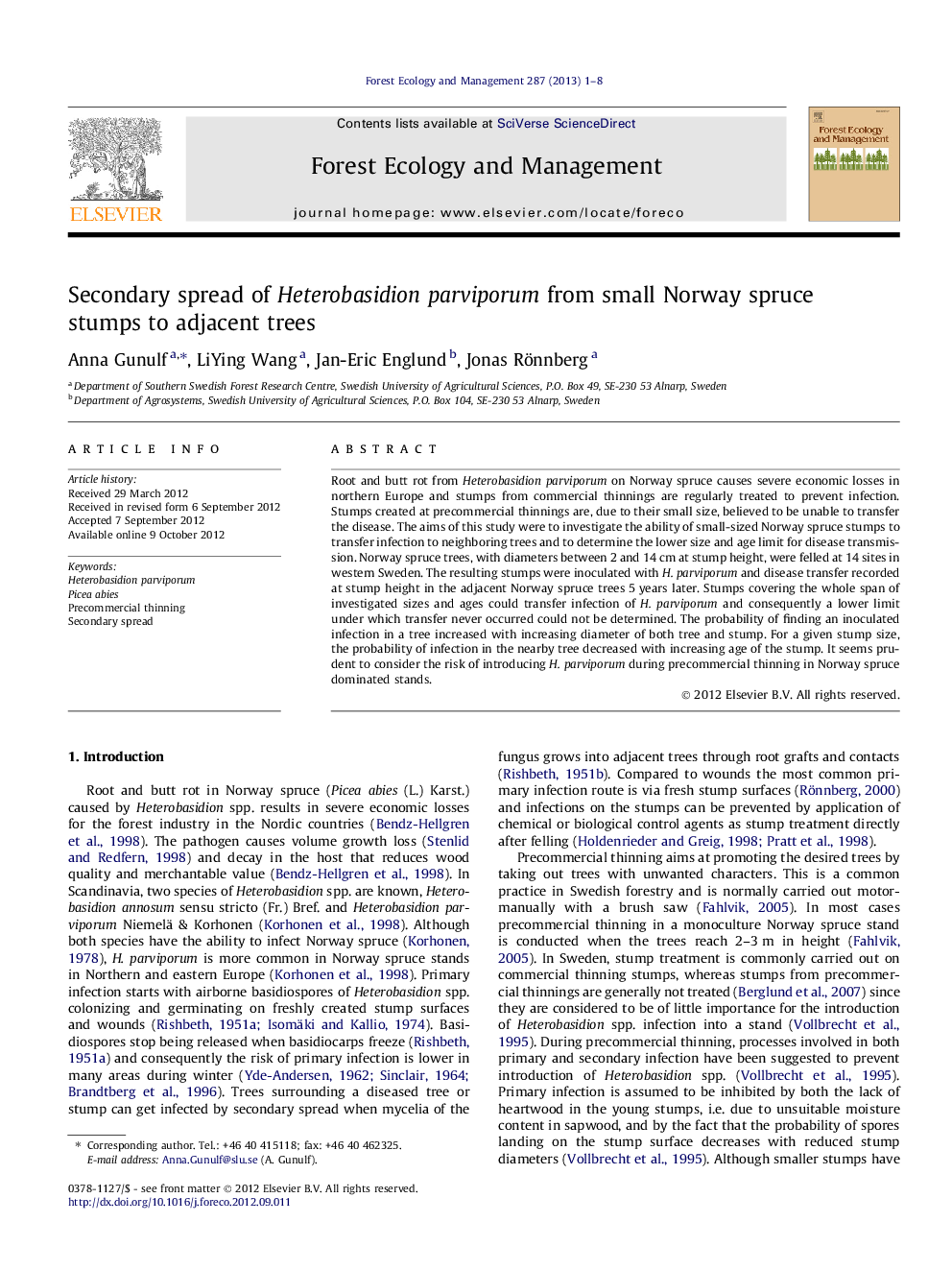| Article ID | Journal | Published Year | Pages | File Type |
|---|---|---|---|---|
| 87289 | Forest Ecology and Management | 2013 | 8 Pages |
Root and butt rot from Heterobasidion parviporum on Norway spruce causes severe economic losses in northern Europe and stumps from commercial thinnings are regularly treated to prevent infection. Stumps created at precommercial thinnings are, due to their small size, believed to be unable to transfer the disease. The aims of this study were to investigate the ability of small-sized Norway spruce stumps to transfer infection to neighboring trees and to determine the lower size and age limit for disease transmission. Norway spruce trees, with diameters between 2 and 14 cm at stump height, were felled at 14 sites in western Sweden. The resulting stumps were inoculated with H. parviporum and disease transfer recorded at stump height in the adjacent Norway spruce trees 5 years later. Stumps covering the whole span of investigated sizes and ages could transfer infection of H. parviporum and consequently a lower limit under which transfer never occurred could not be determined. The probability of finding an inoculated infection in a tree increased with increasing diameter of both tree and stump. For a given stump size, the probability of infection in the nearby tree decreased with increasing age of the stump. It seems prudent to consider the risk of introducing H. parviporum during precommercial thinning in Norway spruce dominated stands.
► Secondary spread of H. parviporum from small Norway spruce stumps was investigated. ► Stumps as small as 2.5 cm spread the disease to adjacent Norway spruce trees. ► Probability of infection in trees increased with increasing size of stump and tree. ► Stump treatment or winter fellings during precommercial thinning could be considered.
